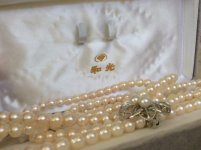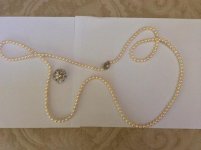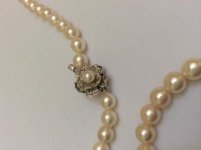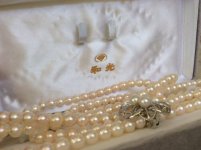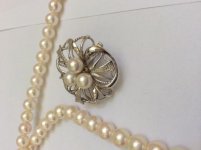My mother had a "wealthy" great uncle who gave this opera length pearl necklace to her decades ago. I was told it was very valuable because it was natural not cultured but I have no idea if that is true. I have the original box and case which inside has some Japanese characters (but I don't read Japanese so I do not know what it says) although the box itself says "WAKO" in gold. I hesitate to send it to anyone to have appraised and or x-rayed without some
inkling if it warrants doing so. I'm not trying to sell it but if it is really valuable I would like to know for personal and perhaps insurance reasons. Does anyone have any idea of what it may be worth and if I really should get it appraised?
It measures 48 inches long and has a keeper as well as the clasp. Any insight is greatly appreciated.
inkling if it warrants doing so. I'm not trying to sell it but if it is really valuable I would like to know for personal and perhaps insurance reasons. Does anyone have any idea of what it may be worth and if I really should get it appraised?
It measures 48 inches long and has a keeper as well as the clasp. Any insight is greatly appreciated.

